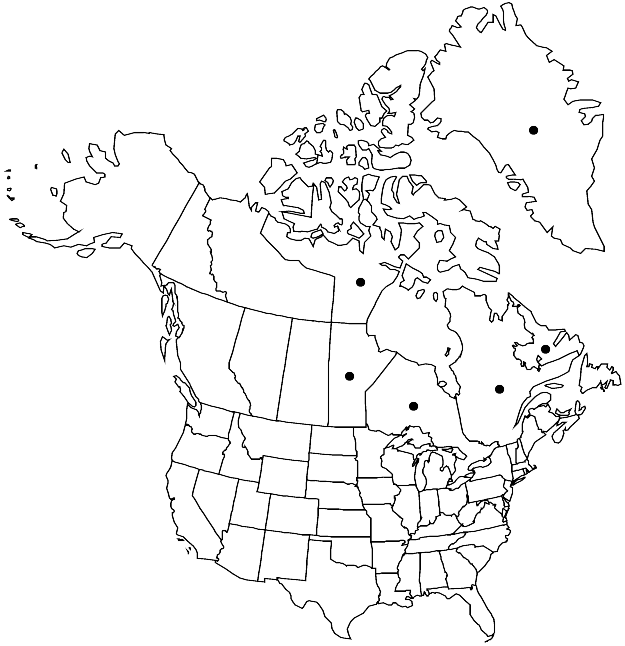Draba alpina
Sp. Pl. 2: 642. 1753.
Perennials; (cespitose); caudex branched (covered with persistent leaves or leaf remains); scapose. Stems unbranched, (0.3–) 0.5–1.7 (–2.8) dm, pubescent throughout, trichomes simple and 2-rayed, 0.3–0.8 mm, with 3–5-rayed ones, 0.1–0.3 mm. Basal leaves rosulate; petiolate; petiole base (not thickened), ciliate, (trichomes simple, 0.3–1 mm); blade oblanceolate to obovate or lanceolate to oblong, 0.8–3 (–4.5) cm × 2.5–6 (–9) mm, margins entire, surfaces abaxially pubescent with stalked, 2–4-rayed trichomes, 0.1–0.5 mm, with simple ones (midvein obscure, not thickened), adaxially glabrous or sparsely pubescent with simple and stalked, 2–4-rayed trichomes. Cauline leaves 0. Racemes 6–18-flowered, ebracteate, considerably elongated in fruit; rachis not flexuous, pubescent as stem. Fruiting pedicels ascending to divaricate-ascending, straight or, sometimes, slightly curved upwards, 4–14 (–30) mm, pubescent, trichomes simple and 2–4-rayed. Flowers: sepals (purplish tinged), narrowly ovate, 2.5–3 mm, pubescent, (trichomes simple and fewer, stalked, 2-rayed); petals bright-yellow, narrowly obovate, 3.5–5 × 1.7–2.5 mm; anthers ovate, 0.3–0.4 mm. Fruits elliptic, plane, flattened, 6–10 × 2–3 mm; valves glabrous or glabrescent, trichomes simple, (not confined to replum); ovules 12–24 per ovary; style 0.2–0.3 mm (stigma about as wide as style). Seeds (pale-brown), ovoid, 0.9–1.3 × 0.6–0.9 mm. 2n = 80.
Phenology: Flowering Jun–Aug.
Habitat: Moist tundra and ridges, sand and gravel flats or beaches
Elevation: 0-1000 m
Distribution

Greenland, Man., Nfld. and Labr. (Labr.), Nunavut, Ont., Que., Europe (Finland), Europe (Norway), Europe (Russia), Europe (Sweden)
Discussion
The synonymy above includes two North American names overlooked by C. L. Hitchcock (1941) and R. C. Rollins (1993). Draba alpina was broadly delimited by O. E. Schulz (1927) and included 17 varieties, some of which (e.g., corymbosa, oxycarpa, pilosa) are recognized herein as distinct species. The name D. alpina was so misapplied that it was used for any circumpolar or alpine, scapose, yellow-flowered, perennial Draba. Various chromosome numbers (e.g., 2n = 64, 80, 112, 120; S. I. Warwick and I. A. Al-Shehbaz 2006) have been reported for the species. As circumscribed here, it has the narrow distribution outlined above and includes plants with 2n = 80. Reports of the species from Alaska, Canadian Northwest Territories and Yukon, Siberia, eastern Asia, Russian Far East, and the Central Asian republics are either suspect or very unlikely. The entire D. alpina complex (including the above three species, D. glacialis Adams, D. macounii, etc.) is in need of critical molecular, cytological, and morphological study.
Selected References
None.
Lower Taxa
"elongated" is not a number."thick" is not a number."dm" is not declared as a valid unit of measurement for this property."dm" is not declared as a valid unit of measurement for this property.